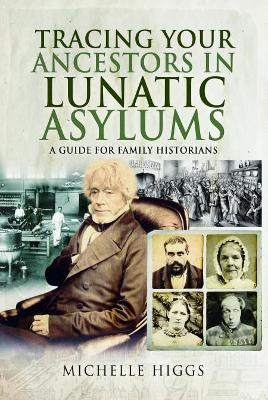Reviewed by annieb123 on
Tracing Your Ancestors in Lunatic Asylums is a resource and history guide and part of a series for family historians produced by Pen & Sword. Due out 19th Jan 2020, it's 208 pages and will be available in paperback format.
I have always been interested in the personal and family side of history rather than the huge overarching wars and migrations. As a healthcare professional, medical and medical care history has been an interest of mine as well. Most of the content of this book is a well annotated discussion of the care and treatment of people who were institutionalized for mental health problems (as they were defined and understood at the time).
There are numerous case studies included here. They are often heartbreaking; the reality of daily life for many people suffering from mental illness was brutal (and short). The chapter are arranged roughly chronologically with descriptions of care and housing prior to 1800, nineteenth century and 20th century. These are followed by descriptions of the medical understanding of different illnesses, the setup and running of mental institutions of the time, different types of institutions (for the dangerous/criminally ill, developmentally disabled, as well as the treatment of mental illness in the armed forces). There is also a chapter covering different potential sources of information for the researcher trying to uncover information about a relative who might have received care for mental illness in the relatively distant past.
The appendices include an alphabetical glossary, links lists (slanted toward sources in the UK), a bibliography as well as links to modern day memorial and living history museums to visit.
As a history of mental illness and treatment in the British Isles, this book is superlative. I would say it's of moderately limited use to genealogists searching for specific information on family members. It is a poignant testimony to the often heartbreaking realities of mental heathcare in the past.
Four stars.
Disclosure: I received an ARC at no cost from the author/publisher for review purposes.
Reading updates
- Started reading
- Finished reading
- 4 November, 2019: Reviewed
